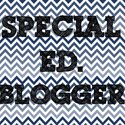Evidence Based or Best Practice: The Beginning
Balanced literacy. Orton-Gilliamham. Think-Alouds. Graphic Organizers. Direct instruction. OMG!!!
Have you ever sat staring at your plans and IEPs and wonder how the #@& am I going to move this kid? Simply because of where the student sits in relation to their grade-level peers.
I have.
OR
I have so many with the same need but they didn’t make as much progress as I was hoping. (Or they needed to.)
Buildings don’t buy curriculum programs with special education students in mind. They might ask (if you're lucky) for your input. To be real, they buy with the larger in mind, which makes sense when you need to get the biggest bang for your buck.
What to do?????
In my building, moving students more than a year's growth is VERY important to us. We strive to close those gaps before they move to middle school.
I don’t have programs. Well, I have access to several but they can be (and most of the time) used by classroom teachers or worse the materials from the program were used but not the program itself.
I know I’m not the only one. So, what do you do???
OR
Want to learn what I do to get data that looks like this?

I had an Instructional Coach when I first started teaching, that showed me the value of putting time into learning and mastering both educational best practices and evidence-based practices. So even, if I was stuck with limited options, I could get tons of bang without a whole lot of stress.
Take guided reading, (yes, I know but you have to work with what you got), I became an expert at guided reading. I worked in tiny groups of two and three but with best practices and a couple of evidence-based practices, I was able to move kids to within months of their peers. (This brings up a whole different conversation when you can do this--is core really happening in the classroom or are they special education. I’m not going to answer those questions, as those are part of the larger school system.)
The Elementary Secondary Education Act defines evidence-based practices as those “effective educational strategies supported by evidence and research”. When teachers use evidence-based practices with fidelity, they can be confident their teaching is likely to support student learning.and
David Ardale defines best education practices as the wide range of individual activities, policies, and program approaches to achieving positive changes in student attitudes or academic behaviors.
Think Hattie and Marzano. (We all have a love/hate relationship with them)
Join me as I walk through how I use these ideas to get the most bang for your buck and move kids to close gaps with my special education students.
Send me your questions or if you're stuck and need help with. I’ll help you problem solve.
Chat soon,

About Me
Resource Library
Thank you! You have successfully subscribed to our newsletter.















0 comments:
Post a Comment